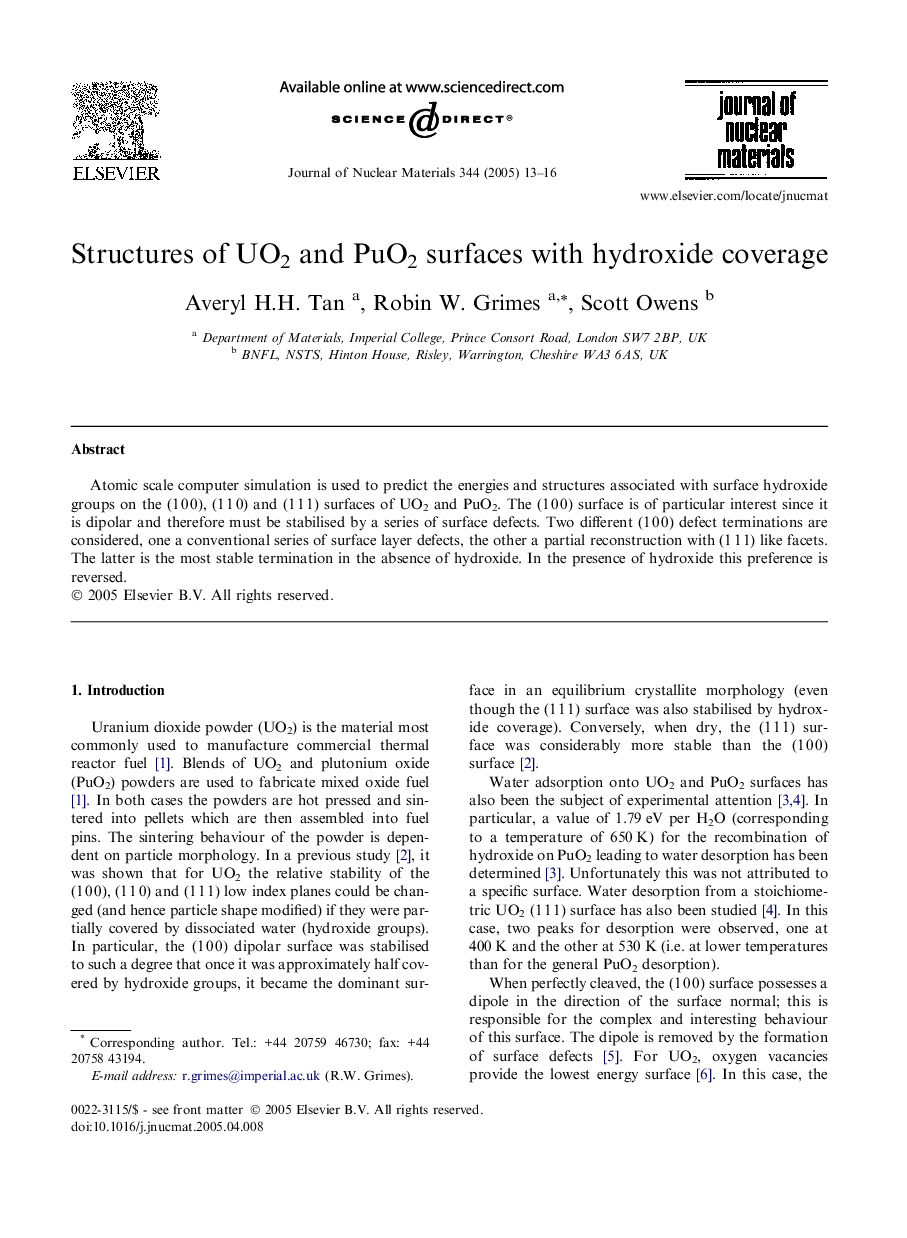| Article ID | Journal | Published Year | Pages | File Type |
|---|---|---|---|---|
| 9793622 | Journal of Nuclear Materials | 2005 | 4 Pages |
Abstract
Atomic scale computer simulation is used to predict the energies and structures associated with surface hydroxide groups on the (1Â 0Â 0), (1Â 1Â 0) and (1Â 1Â 1) surfaces of UO2 and PuO2. The (1Â 0Â 0) surface is of particular interest since it is dipolar and therefore must be stabilised by a series of surface defects. Two different (1Â 0Â 0) defect terminations are considered, one a conventional series of surface layer defects, the other a partial reconstruction with (1Â 1Â 1) like facets. The latter is the most stable termination in the absence of hydroxide. In the presence of hydroxide this preference is reversed.
Related Topics
Physical Sciences and Engineering
Energy
Nuclear Energy and Engineering
Authors
Averyl H.H. Tan, Robin W. Grimes, Scott Owens,
